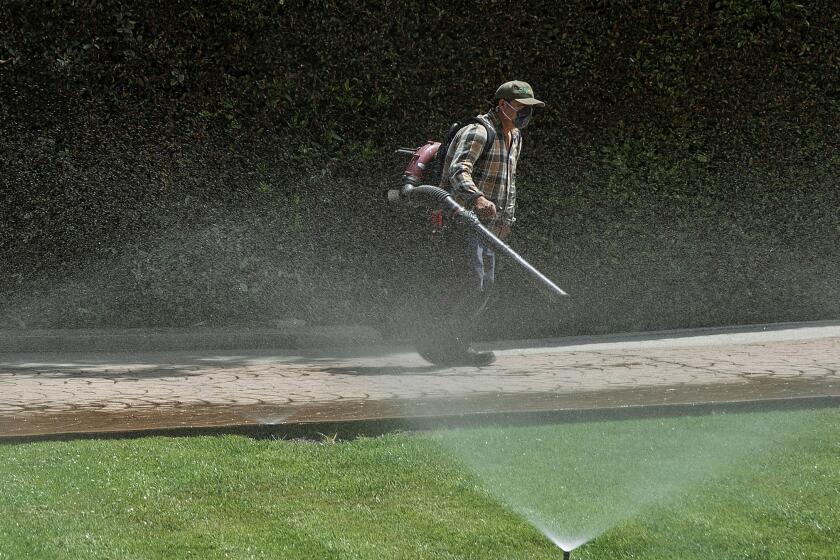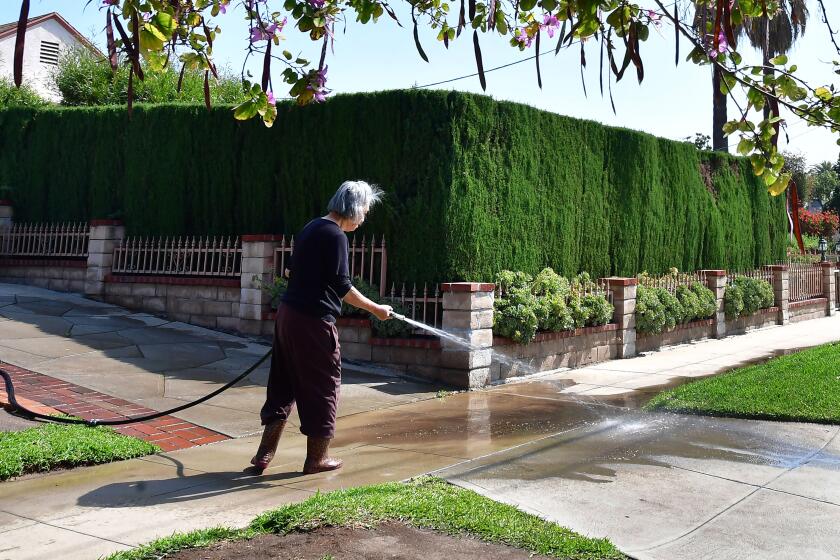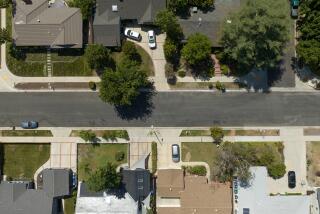Can we do it? Unprecedented water cuts will require sacrifices for Southern California
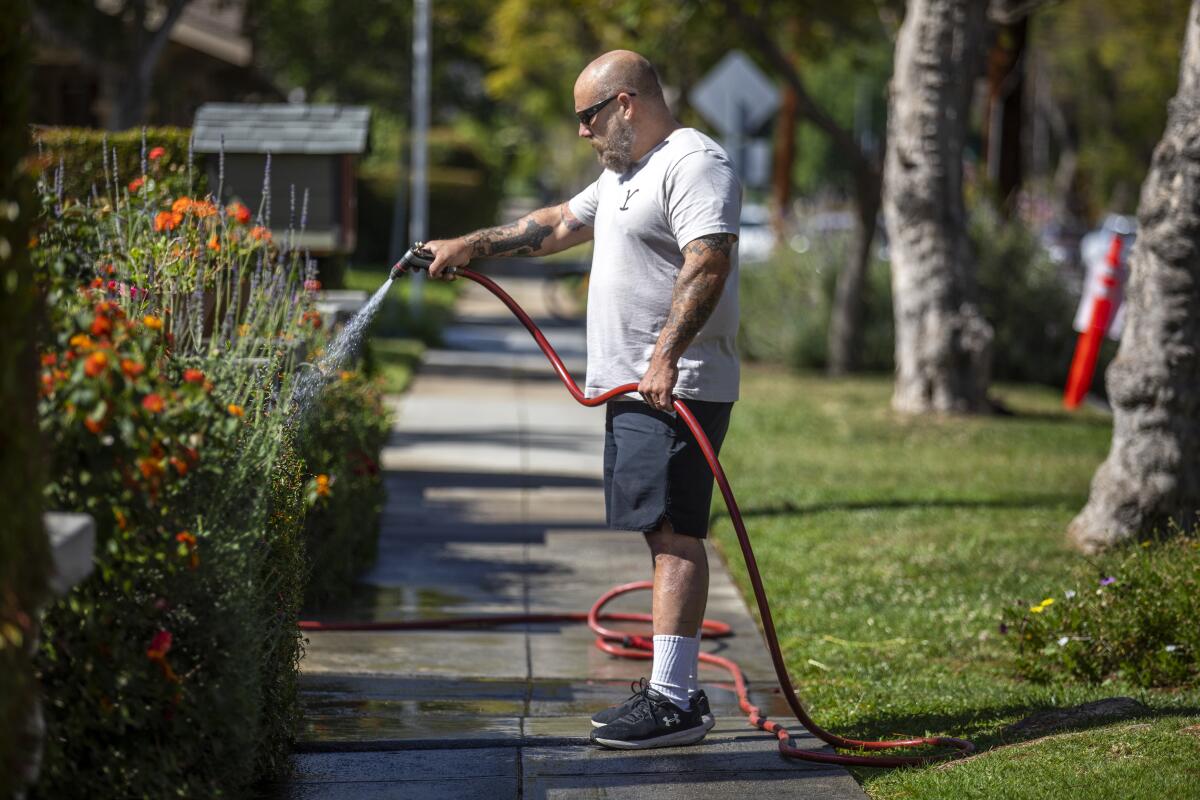
In less than a month, residents in large portions of Southern California will be under unprecedented water restrictions due to a worsening drought that has severely limited water supplies.
The biggest change is the requirement from the Metropolitan Water District that local water suppliers in those areas, from Ventura County to northwestern L.A. County to parts of the Inland Empire, limit outdoor watering to once a week.
But behind that is a big cut in water use needed to avoid even more serious measures. Can we do it? Here’s what we know:
How much water do we now use?
Currently, the average potable water use across the MWD’s service area — including residential, commercial and industrial water use — amounts to 125 gallons per person per day.
But those numbers vary by water agency. Ellen Cheng, a spokesperson for the Los Angeles Department of Water and Power, said customers average about 111 gallons per person per day.
New drought rules in Southern California aim to cut daily water use to 80 gallons per person. Water managers say hitting this number is critical.
How much water will those in targeted areas need to use to hit savings numbers?
80 gallons per day — or a 35% drop.
How do officials expect us to get there?
The focus right now is on outdoor water use.
Under the new rules, MWD will require suppliers to limit watering times on the one day when outdoor watering is allowed for each customer. The details will be left to each supplier, but some water agencies have already said sprinklers should run no more than eight minutes. That alone should achieve significant savings, since outdoor watering accounts for as much as 70% of residential use in the region, according to the MWD.
What will the impact of that be on the landscape?
Officials expect yellow and brown lawns due to less water.
“We cannot afford green lawns,” said Adel Hagekhalil, the MWD’s general manager, last week.
There are exceptions to the new rules, however. Those exceptions are meant to protect the region’s trees, which provide valuable shade and help stave off dangerous heat health effects.
Large portions of Southern California are being told to water outdoors just one day a week. And a total watering ban could be imposed by fall.
“The fact is, we don’t want to see our beautiful and ecologically important tree canopy suffer because of these restrictions,” said Deven Upadhyay, the MWD’s chief operating officer. “People should be able to continue to hand-water their trees.”
What about watering?
Shorter showers. Fewer flushes. Use of water-efficient appliances. But as you go about trimming your water usage at home, experts say the biggest potential for shrinking water use lies outdoors in our yards. That’s why officials focused on cutting outdoor water use.
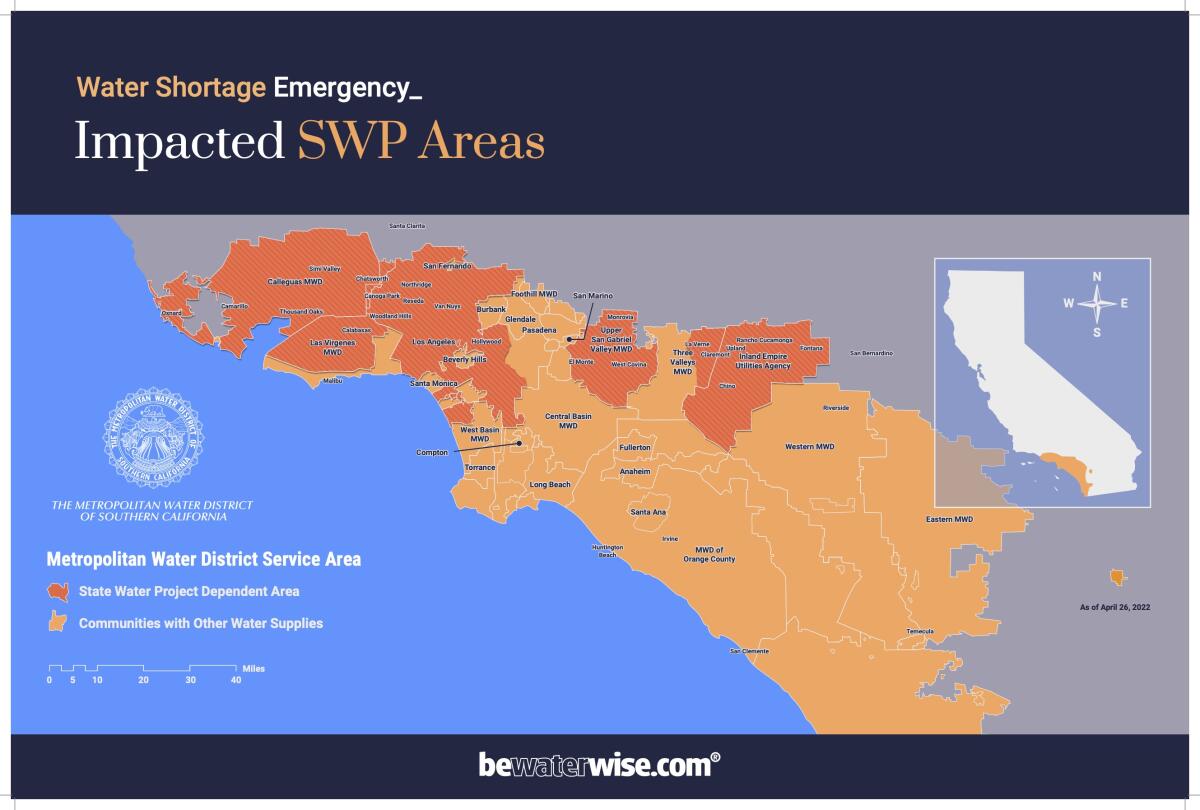
Shahzeen Attari, an associate professor at Indiana University in Bloomington, said that focusing the restrictions on a specific activity — outdoor watering — instead of a per-capita number makes sense from a policy perspective, at least for the time being.
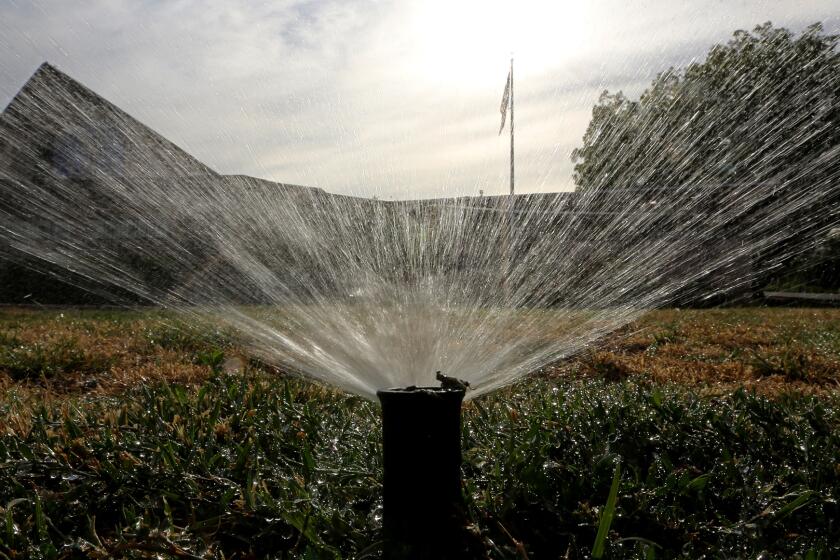
More water restrictions are coming to Southern California. How to conserve
Californians are well-acquainted with the need to save water. Here are some practical tips to cut your water use, plus a look at the big picture.
“If I say you’re only allowed to use water on a particular day, on a Tuesday for example, then anyone who’s watering on Wednesday, Thursday or Friday, it’s easy to say you’re not in compliance,” said Attari. “But if I say you’re allowed to use 10 gallons any time during the week ... it’s really hard for me to know whether you’ve reached your quota or not.”
Am I covered by the restrictions?
The rules will target areas that rely heavily or entirely on the State Water Project, a Northern California water supply that officials say has just 5% of full water allocations available this year. Water supplies in reservoirs across the state have shrunk dramatically over the past three years during the extreme drought, which is being significantly worsened by higher temperatures caused by climate change.
Areas that receive water from the Colorado River and other sources will be spared, at least for now.
The affected agencies include: Calleguas Municipal Water District, Inland Empire Utilities Agency, Las Virgenes Municipal Water District, Los Angeles Department of Water and Power, Three Valleys Municipal Water District and Upper San Gabriel Valley Municipal Water District.
It will fall to each member agency to determine how best to implement the restrictions.
According to MWD, all or part of the following cities and communities are dependent on water from the State Water Project and will be affected by the new restrictions:
- Agoura Hills
- Arcadia
- Avocado Heights
- Azusa
- Baldwin Park
- Bassett
- Bradbury
- Calabasas
- Camarillo
- Canoga Park
- Chatsworth
- Chino
- Chino Hills
- City of Industry
- Claremont
- Covina
- Culver City
- Duarte
- El Monte
- Encino
- Fontana
- Granada Hills
- Hacienda Heights
- Irwindale
- La Puente
- La Verne
- Los Angeles
- Mission Hills
- Monrovia
- Montclair
- Moorpark
- Newbury Park
- North Hills
- North Hollywood
- North Whittier
- Northridge
- Oak Park
- Ontario
- Oxnard
- Pacific Palisades
- Pacoima
- Panorama City
- Playa del Rey
- Playa Vista
- Point Mugu NAWC
- Port Hueneme
- Port Hueneme CBC Base
- Porter Ranch
- Rancho Cucamonga
- Reseda
- Rialto
- Rosemead
- San Gabriel
- Sherman Oaks
- Simi Valley
- Somis
- South El Monte
- South Pasadena
- Spy Glass Hill
- Studio City
- Sun Valley
- Sunland
- Sylmar
- Tarzana
- Temple City
- Thousand Oaks
- Tujunga
- Universal City
- Upland
- Valinda
- Valley Village
- Van Nuys
- Venice
- West Covina
- West Hills
- West Hollywood
- Westlake Village
- Whittier
- Winnetka
- Woodland Hills
